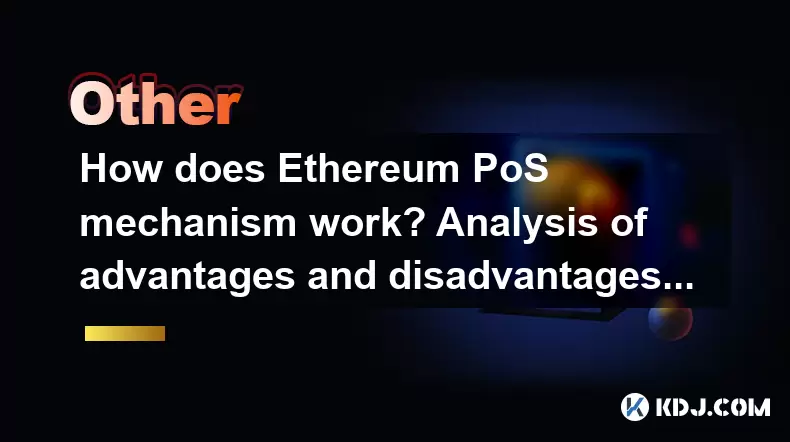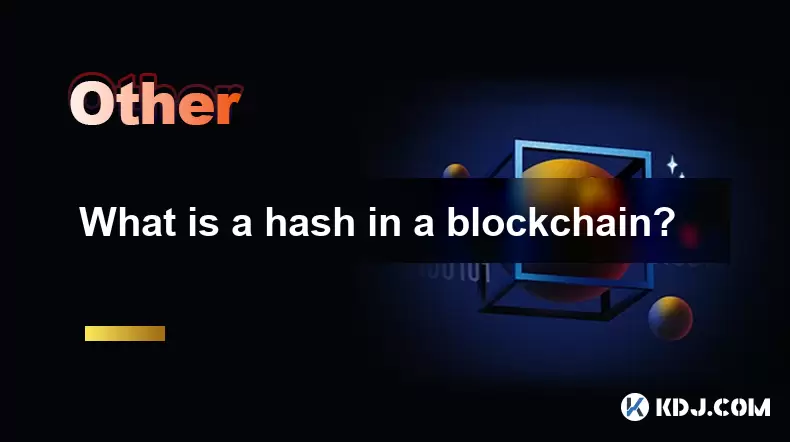-
 Bitcoin
Bitcoin $113900
-1.39% -
 Ethereum
Ethereum $3517
-4.15% -
 XRP
XRP $3.009
1.59% -
 Tether USDt
Tether USDt $0.9997
-0.04% -
 BNB
BNB $766.8
-1.41% -
 Solana
Solana $164.6
-2.38% -
 USDC
USDC $0.9998
-0.02% -
 TRON
TRON $0.3277
0.65% -
 Dogecoin
Dogecoin $0.2023
-1.67% -
 Cardano
Cardano $0.7246
0.05% -
 Hyperliquid
Hyperliquid $38.27
-4.77% -
 Sui
Sui $3.528
-0.52% -
 Stellar
Stellar $0.3890
-0.73% -
 Chainlink
Chainlink $16.16
-2.69% -
 Bitcoin Cash
Bitcoin Cash $539.9
-4.38% -
 Hedera
Hedera $0.2425
-2.00% -
 Avalanche
Avalanche $21.71
-0.97% -
 Toncoin
Toncoin $3.662
5.73% -
 Ethena USDe
Ethena USDe $1.000
-0.02% -
 UNUS SED LEO
UNUS SED LEO $8.964
0.35% -
 Litecoin
Litecoin $107.7
2.33% -
 Shiba Inu
Shiba Inu $0.00001223
-0.40% -
 Polkadot
Polkadot $3.617
-0.97% -
 Uniswap
Uniswap $9.052
-2.49% -
 Monero
Monero $295.1
-3.79% -
 Dai
Dai $0.9999
0.00% -
 Bitget Token
Bitget Token $4.315
-1.85% -
 Pepe
Pepe $0.00001060
0.11% -
 Cronos
Cronos $0.1342
-2.72% -
 Aave
Aave $256.0
-0.87%
How does Ethereum PoS mechanism work? Analysis of advantages and disadvantages of PoS mechanism
Ethereum's shift to Proof-of-Stake enhances energy efficiency, security, and scalability, allowing users to validate blocks by staking ETH instead of relying on energy-intensive mining.
Jun 14, 2025 at 09:35 pm

Understanding the Basics of Ethereum's PoS Mechanism
Ethereum transitioned from a Proof-of-Work (PoW) to a Proof-of-Stake (PoS) consensus mechanism through an upgrade known as The Merge. In PoS, validators are chosen to create new blocks based on the amount of cryptocurrency they are willing to stake as collateral. This replaces the energy-intensive mining process used in PoW systems. Validators are required to deposit at least 32 ETH into a dedicated staking contract to participate in block validation.
Validators are randomly selected to propose and attest to blocks. Their responsibilities include verifying transactions, creating new blocks, and voting on the validity of other proposed blocks. The more ETH staked, the higher the chance a validator has of being selected. However, if a validator acts dishonestly or fails to perform their duties, they risk losing part of their stake—a process called slashing.
How Block Validation Works in Ethereum's PoS
In Ethereum’s PoS system, time is divided into slots of 12 seconds, with each slot representing an opportunity for a validator to propose a block. Every 32 slots form an epoch, during which validator attestations are processed and rewards or penalties are calculated.
Validators are assigned to committees within each slot. These committees verify the validity of proposed blocks by issuing attestations—signed votes indicating agreement with a specific chain state. When enough attestations are gathered, the block becomes finalized, making it extremely difficult to reverse.
Validators earn rewards for correct behavior and lose penalties for misbehavior. Rewards come from newly minted ETH, transaction fees, and inclusion incentives for timely attestations. Penalties can be applied for offline periods or malicious behavior, including proposing conflicting blocks.
Advantages of Ethereum's PoS Consensus
One major advantage of PoS over PoW is energy efficiency. Since PoS does not rely on computational puzzles that require massive processing power, it significantly reduces electricity consumption. This makes Ethereum more environmentally sustainable compared to older blockchain networks like Bitcoin.
Another benefit is scalability potential. With PoS, Ethereum can implement upgrades like sharding, which splits data across multiple chains to improve throughput. Staking also allows for a more decentralized participation model, where anyone with 32 ETH can become a validator without needing specialized hardware.
Security is enhanced through economic disincentives. A would-be attacker must control at least 33% of the total staked ETH to compromise the network, which is both costly and unlikely. Moreover, slashing ensures that malicious actors face significant financial consequences.
Disadvantages and Risks of PoS
Despite its benefits, PoS introduces several risks. One concern is centralization pressure. Wealthier participants or large staking pools may dominate the validator set, potentially undermining decentralization. Additionally, long-range attacks become feasible if attackers acquire old private keys and attempt to rewrite history without facing slashing penalties.
Staking requires users to lock up their ETH for extended periods, reducing liquidity. Although withdrawals were enabled post-Merge, full unstaking capabilities were introduced later via the Shanghai Upgrade. During earlier phases, users could not access their staked ETH, limiting flexibility.
Another drawback is the "nothing at stake" problem, where validators might vote on multiple competing chains without penalty. Ethereum mitigates this through finality gadgets and slashing conditions, but these mechanisms add complexity to the protocol.
How to Participate in Ethereum Staking
To become a validator, you need to follow a series of steps:
- Ensure you have at least 32 ETH available for staking.
- Download and install staking software such as Prysm, Lighthouse, or Teku.
- Generate a validator key pair using the official Ethereum staking deposit CLI tool.
- Send exactly 32 ETH to the Ethereum staking contract via the official website.
- Set up your execution client (e.g., Geth) and connect it to your consensus client.
- Keep your node running continuously to avoid penalties for downtime.
For those who do not meet the 32 ETH requirement, staking pools or services like Lido Finance allow users to pool resources and receive liquid staking tokens in return. These tokens represent staked ETH plus accrued rewards and can be traded or used in DeFi protocols.
Validators must ensure reliable internet connectivity and maintain updated software to avoid slashing or missing attestation opportunities.
Comparing PoS and PoW: Key Differences
Unlike PoW, where miners compete to solve cryptographic puzzles, PoS selects validators based on economic stake rather than computational power. This eliminates the need for expensive mining rigs and excessive electricity consumption.
In PoW, security relies on the assumption that no single entity controls more than 50% of the hash rate. In contrast, PoS assumes most validators act honestly because they have financial skin in the game. Dishonest behavior results in loss of funds, deterring bad actors.
Transaction finality also differs. In PoW, confirmations are probabilistic, meaning deeper blocks are more secure. In PoS, especially with Ethereum’s Casper FFG finality mechanism, certain checkpoints are cryptographically finalized, offering stronger guarantees about immutability.
However, PoW is often considered more battle-tested due to its longer operational history and fewer theoretical attack vectors. PoS remains relatively newer and continues to evolve through ongoing research and upgrades.
Frequently Asked Questions
Q: Can I unstake my ETH anytime after staking?
A: After the Shanghai Upgrade, validators can now withdraw both their initial 32 ETH stake and accumulated rewards. However, withdrawals are processed in batches, and there may be delays depending on network congestion.
Q: What happens if my validator goes offline?
A: If your validator is offline for a period, you will incur minor penalties proportional to the duration of downtime. These penalties are designed to encourage consistent uptime but are less severe than slashing penalties.
Q: Is staking safer than mining in Ethereum?
A: Staking introduces different risks compared to mining. While it avoids environmental concerns and hardware costs, it involves capital lock-up and potential slashing. Overall, it offers a more predictable income stream with lower entry barriers for average users.
Q: How much can I earn by staking ETH?
A: Staking rewards vary depending on the total amount of ETH staked in the network. On average, annual returns range between 4% to 6%, though this can fluctuate with changes in participation rates and network inflation.
Disclaimer:info@kdj.com
The information provided is not trading advice. kdj.com does not assume any responsibility for any investments made based on the information provided in this article. Cryptocurrencies are highly volatile and it is highly recommended that you invest with caution after thorough research!
If you believe that the content used on this website infringes your copyright, please contact us immediately (info@kdj.com) and we will delete it promptly.
- DeFi Token Summer Gains: Is Mutuum Finance the Real Deal?
- 2025-08-02 18:30:12
- Bitcoin, Realized Price, and the Top: Are We There Yet?
- 2025-08-02 18:30:12
- Dogwifhat (WIF) Rally: Will the Meme Coin Bite Back?
- 2025-08-02 19:10:12
- PayFi Heats Up: Tron's AMA Recap & TRX's Bullish Nasdaq Debut
- 2025-08-02 19:10:12
- ARK Invest, Coinbase, and BitMine: Decoding the Crypto Investment Shuffle
- 2025-08-02 19:15:23
- JasmyCoin Under Pressure: Bears Grip Tight, Testing Lower Support
- 2025-08-02 19:15:23
Related knowledge

What is the difference between on-chain and off-chain transactions?
Aug 02,2025 at 04:22pm
Understanding On-Chain TransactionsOn-chain transactions refer to digital asset transfers that are recorded directly on a blockchain ledger. These tra...

What is the double-spending problem and how does blockchain prevent it?
Aug 02,2025 at 01:07pm
Understanding the Double-Spending ProblemThe double-spending problem is a fundamental challenge in digital currency systems where the same digital tok...

What is the difference between a blockchain and a database?
Aug 01,2025 at 09:36pm
Understanding the Core Structure of a BlockchainA blockchain is a decentralized digital ledger that records data in a series of immutable blocks linke...

How does blockchain handle scalability?
Aug 02,2025 at 02:58pm
Understanding Blockchain Scalability ChallengesBlockchain scalability refers to a network's ability to handle an increasing volume of transactions wit...

What is a hash in a blockchain?
Aug 02,2025 at 05:28am
Understanding the Concept of Hash in BlockchainA hash in the context of blockchain technology refers to a unique digital fingerprint generated by a cr...

What is a hash in a blockchain?
Aug 02,2025 at 04:43am
Understanding the Concept of Hash in BlockchainA hash in the context of blockchain technology refers to a unique digital fingerprint generated by a cr...

What is the difference between on-chain and off-chain transactions?
Aug 02,2025 at 04:22pm
Understanding On-Chain TransactionsOn-chain transactions refer to digital asset transfers that are recorded directly on a blockchain ledger. These tra...

What is the double-spending problem and how does blockchain prevent it?
Aug 02,2025 at 01:07pm
Understanding the Double-Spending ProblemThe double-spending problem is a fundamental challenge in digital currency systems where the same digital tok...

What is the difference between a blockchain and a database?
Aug 01,2025 at 09:36pm
Understanding the Core Structure of a BlockchainA blockchain is a decentralized digital ledger that records data in a series of immutable blocks linke...

How does blockchain handle scalability?
Aug 02,2025 at 02:58pm
Understanding Blockchain Scalability ChallengesBlockchain scalability refers to a network's ability to handle an increasing volume of transactions wit...

What is a hash in a blockchain?
Aug 02,2025 at 05:28am
Understanding the Concept of Hash in BlockchainA hash in the context of blockchain technology refers to a unique digital fingerprint generated by a cr...

What is a hash in a blockchain?
Aug 02,2025 at 04:43am
Understanding the Concept of Hash in BlockchainA hash in the context of blockchain technology refers to a unique digital fingerprint generated by a cr...
See all articles

























































































